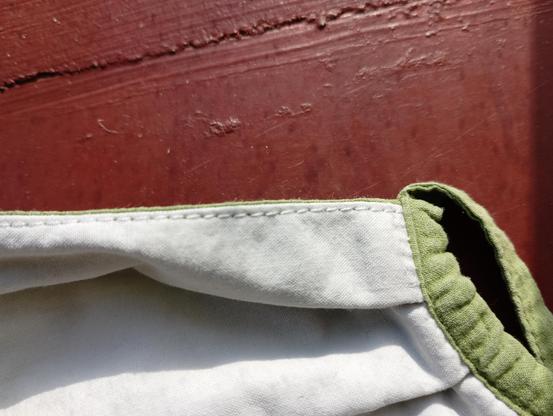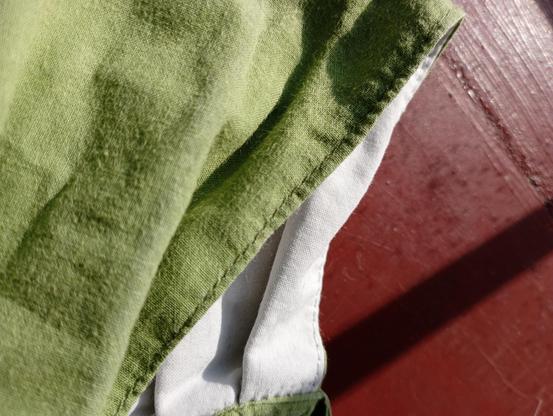@Faintdreams Cream. Machine lockstitch keeps each thread on the same side of the fabric that it starts on; the stitch mechanism only makes them interlock by poking loops of top thread through and passing the bobbin through them. The thread never passes fully through the fabric to the other side and back through a different hole, as in hand-sewn stitches -- that's impossible for a machine to do.
All conventional sewing machine stitches (straight, zigzag, triple straight stitch, twin needle, shaped like little ducks...) are lockstitch; they differ only in how the stitches are positioned. Some machines can do chain stitch, which uses a single top thread (no bobbin) and a different stitch-forming mechanism. Overlockers / sergers use multiple top threads to create more complex chain stitches.
As others have said, make sure you get the tension right so that the thread is 1) balanced and 2) not too tight or too loose on both sides. Even if it's perfect, depending on the weight of the fabric you may see tiny points of the opposite colour on each side -- that's where each thread is looping over the other thread where the holes are. But if the tension is correct this shouldn't be very noticeable, and it may also become less noticeable when you wash the garment.
If a colour is peeking through on one side only, that colour needs to be tighter (if it's the top thread) or the other colour needs to be less tight (if the colour is the bobbin thread).
If the tension is wrong when the threads are balanced, it's possible to adjust the bobbin tension as well, but is generally not advised unless you're really 100% sure and you know what you're doing (it won't break anything, and vintage manuals even recommend it for wide zigzag, but it may be difficult to put it back the way it was -- if you do this, turn the screw by *tiny increments* and take a photo at each step so that you can reverse them afterwards).
Here are some photos of two-colour topstitching on a mask I made. The green is visible on the white side more than the white is visible on the green side, so I probably should have made the green thread tighter or the white thread looser!

